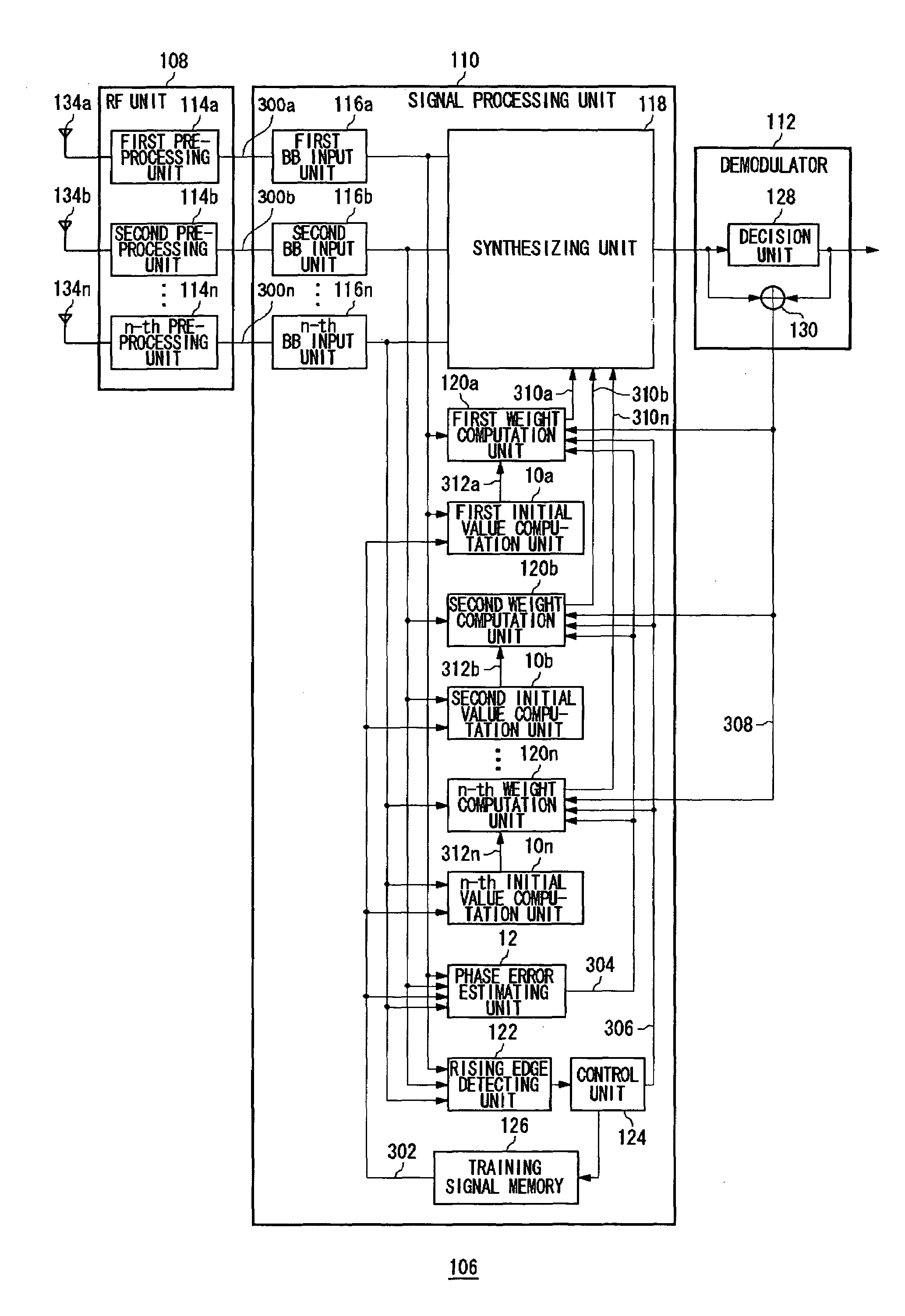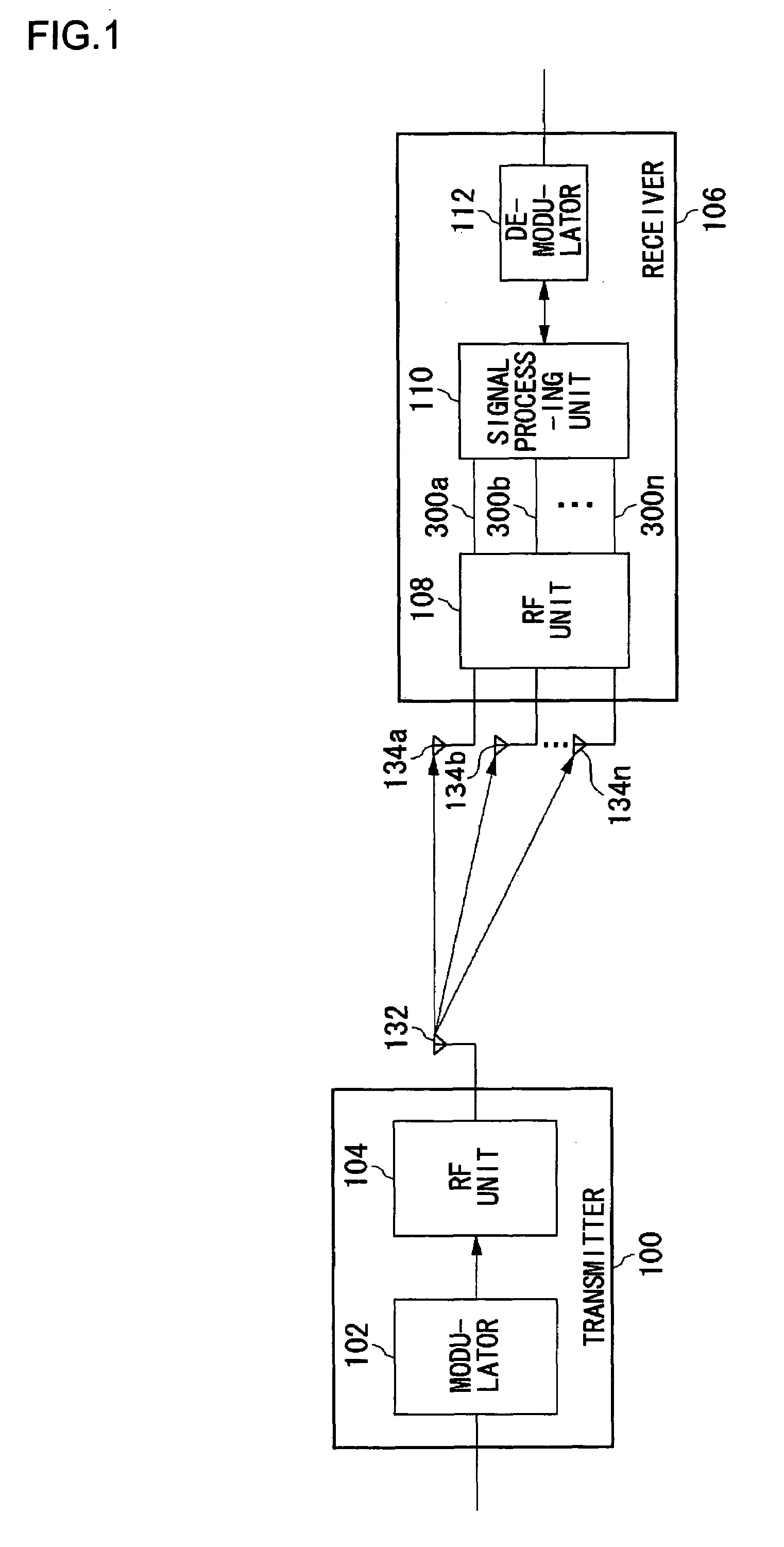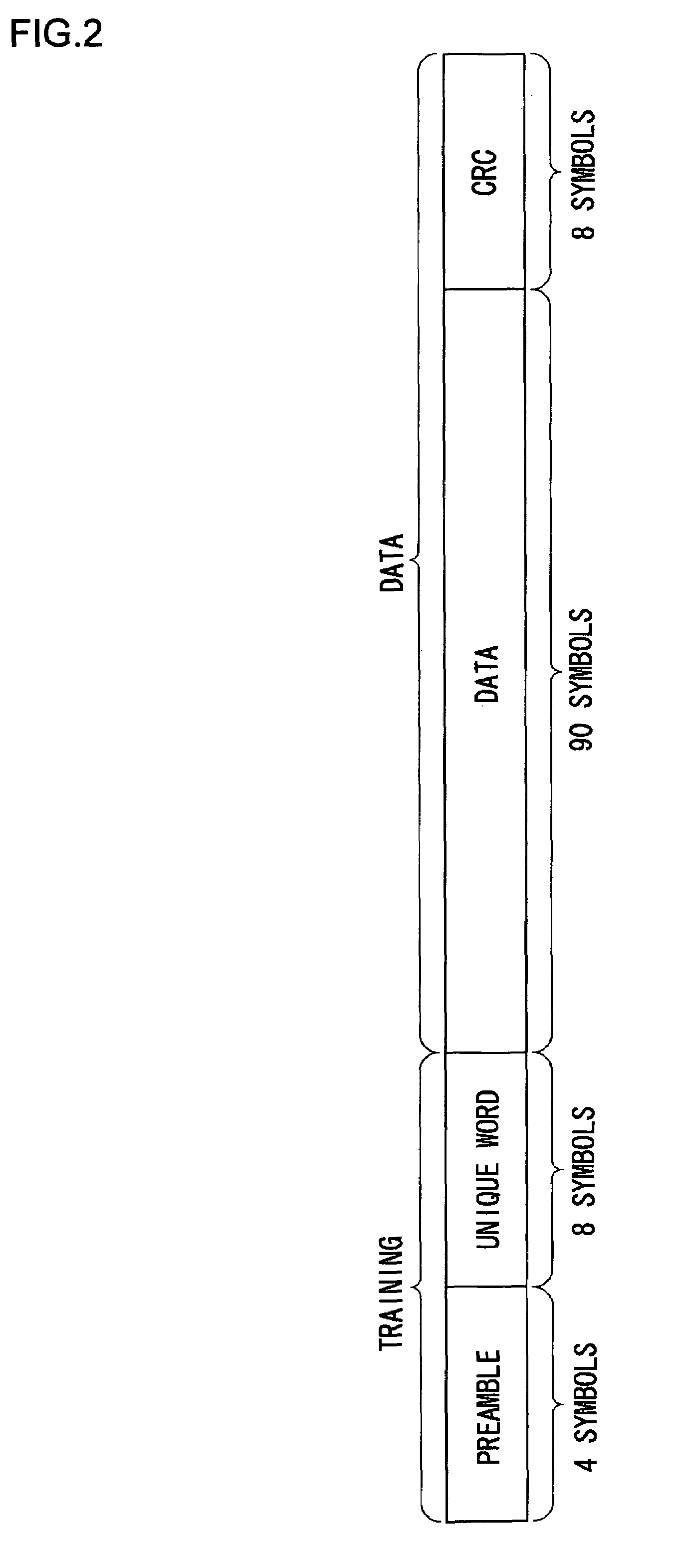Method and apparatus for estimating response characteristic, and receiving method and receiver utilizing the same
a response characteristic and estimation method technology, applied in the direction of synchronisation signal speed/phase control, amplitude demodulation, baseband system details, etc., can solve the problems of general degradation of receiving characteristics and the inability of technology utilizing correlation processing to track environmental changes, so as to improve the estimation accuracy of frequency offset, reduce the degradation of response characteristic estimation accuracy, and simplify the arithmetic circuit
- Summary
- Abstract
- Description
- Claims
- Application Information
AI Technical Summary
Benefits of technology
Problems solved by technology
Method used
Image
Examples
first embodiment
[0045]The first embodiment of the present invention relates to a receiver provided with an adaptive array antenna which receives radio signals with a plurality of antennas as burst signals and synthesizes the received signals with weighting them respectively by different weighting coefficients. The burst signal is composed of a known training signal which is disposed in the head part thereof and a data signal. The receiver according to the first embodiment, in a training signal interval, performs a correlation processing based on the training signal and the received signal and estimates frequency offset between frequency oscillators of a transmitter and the receiver. The correlation processing and the estimation of the frequency offset are performed in parallel. Initial response characteristics of the plurality of received signals to the transmission signal are acquired respectively by compensating the results of the correlation processings with the estimated frequency offset when t...
second embodiment
[0110]In the second embodiment, in the interval of training signal, which is included in the received signals same as in the first embodiment, the frequency offset between the frequency oscillators of the transmitter and the receiver is estimated. In the first embodiment, the frequency offset was estimated after the signal component of the training signal is eliminated from the received signal. On the other hand, in the second embodiment, where the training signal is structured by repeating signal series which has shorter frequency than the training signal, the frequency offset is estimated between same signals which appear in a cyclic manner because of the repetition. Therefore, it is not required to eliminate the signal component of the training signal from the received signal and the multiplication unit for the elimination becomes unnecessary.
[0111]FIG. 15 shows the structure of a phase error estimating unit 12 according to the second embodiment. The phase error estimating unit 1...
third embodiment
[0113]In the third embodiment, same as in the first embodiment and the second embodiment, the frequency offset between the frequency oscillators of the transmitter and the receiver is estimated. In the first and second embodiments, the frequency offset is estimated in a time axis based on the signal acquired by delaying the received signal and the received signal in the interval of the training signal. On the other hand, in the third embodiment, the received signal is converted by the Fourier transform and the frequency offset is estimated in a frequency axis based on the received signal in a frequency space. By transforming the received signal to the signal in the frequency space, the frequency offset can be estimated both in the cases where the received signal is the training signal and the received signal is the data signal. As a result, the frequency offset can be estimated more accurately in longer time than the interval of the training signal.
[0114]FIG. 16 shows the structure ...
PUM
 Login to View More
Login to View More Abstract
Description
Claims
Application Information
 Login to View More
Login to View More - R&D
- Intellectual Property
- Life Sciences
- Materials
- Tech Scout
- Unparalleled Data Quality
- Higher Quality Content
- 60% Fewer Hallucinations
Browse by: Latest US Patents, China's latest patents, Technical Efficacy Thesaurus, Application Domain, Technology Topic, Popular Technical Reports.
© 2025 PatSnap. All rights reserved.Legal|Privacy policy|Modern Slavery Act Transparency Statement|Sitemap|About US| Contact US: help@patsnap.com



